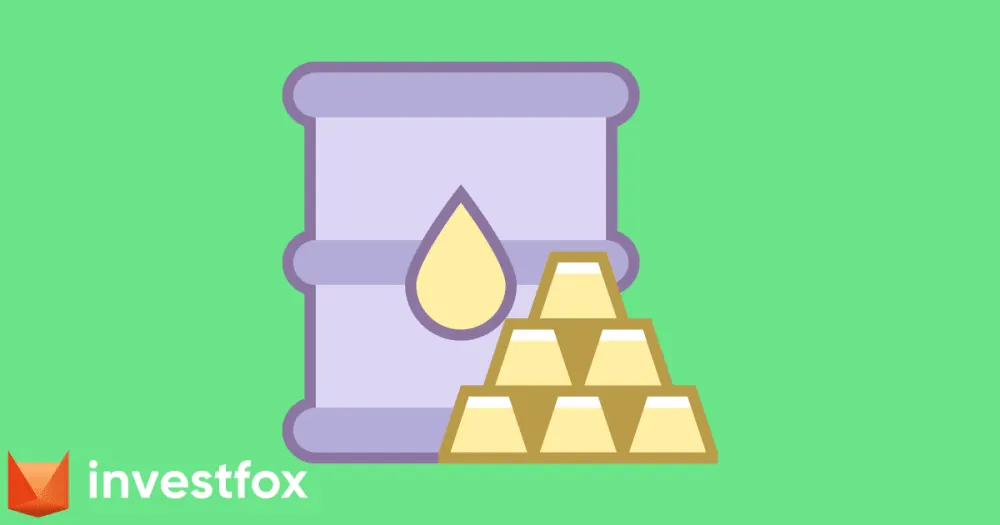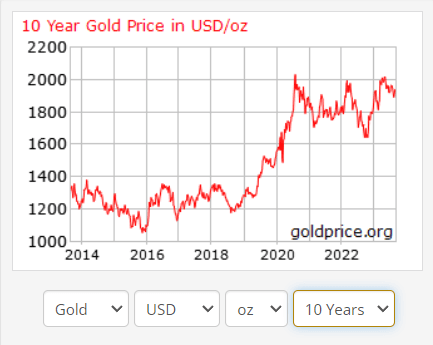Our partner, XM, lets you access a free demo account to apply your knowledge.
No hidden costs, no tricks.

Commodities are some of the most actively traded assets in the global markets. Every day, retail and institutional investors buy and sell commodities futures contracts to generate profits and enhance liquidity on the market.
But what are commodities exactly and what types of commodities are available for trading around the world?
Commodities are raw materials or primary agricultural products that can be bought and sold. They are typically standardized and interchangeable with other goods of the same type. Commodities are essential in various industries, and they are often traded on commodity exchanges. These materials are strategically very important for national economies and trade agreements and disputes arise time after time due to the scarcity or issues associated with producing these commodities.
Commodities are essential cogs of the global economy that figuratively and literally fuel the systems of international trade.
If you are interested in investing in commodities and would like to know more about what types of commodities you can trade, this Investfox guide is for you.
Commodities range from oil and gas and other energy resources to agricultural products, such as corn, wheat, coffee, sugar, cotton, etc.
Broadly speaking, commodities are anything and everything that can be grown, mined, or obtained in other ways from sources derived from natural resources.
Crude oil is one of the most widely traded commodities. It is a fossil fuel that is refined to produce gasoline, diesel, jet fuel, and various petrochemical products. The two primary types are Brent crude and West Texas Intermediate (WTI) crude.
Oil is one of the most geopolitically strategic commodities in the world and the global market for crude oil is larger than the market capitalization of Microsoft and Amazon.com. The global crude oil market is estimated to be over $2.1 trillion as of 2023.

Natural gas is a fossil fuel primarily used for heating and electricity generation. It is traded as both a physical commodity and a financial instrument. Despite international efforts to phase out the use of natural gas for heating and energy generation, the global gas market is estimated to be over $1 trillion.
Gold is a precious metal valued for its rarity and attractiveness. It is used for jewelry, as a store of value, and in industrial applications. Gold is often seen as a safe-haven asset and a hedge against inflation.
Investing in gold is one of the most popular strategies for investors during uncertainties on the stock and bond markets.
As of 2023, the global gold market is estimated to be worth $196 billion.

Like gold, silver is a precious metal. It is used in jewelry, electronics, and photography. Silver prices are influenced by both industrial demand and its role as a store of value.
Silver is the secondary safe-haven metal used by households to invest in during periods of high inflation.
As of 2023, the global silver market is estimated to be worth $20 billion.
Copper is an industrial metal widely used in electrical wiring, plumbing, and construction. It is often considered a barometer for economic health because of its importance in various industries.
Copper is one of the most widely available and widely mined metals in the world. As of 2023, the global copper market is estimated to equal $183 billion.
Wheat is a staple grain used in various food products, including bread, pasta, and cereals. It is a key agricultural commodity and is traded in various forms, including wheat futures contracts.
As of 2023, the global wheat market is estimated to equal $48 billion.
Corn is another important grain commodity used in food production, livestock feed, and ethanol production. It is a staple crop in many countries and is traded on commodity exchanges.
The global market for corn is estimated to equal $75 billion as of 2023.
Soybeans are a major agricultural commodity used in the production of soybean oil, animal feed, and various food products. They are also a key component in the global supply chain for protein.
The global soybean market is estimated to equal $185 billion as of 2023.
Cocoa is the primary ingredient in chocolate production. It is sourced primarily from West Africa and traded as cocoa futures contracts.
The global cocoa market is estimated to equal $12.5 billion as of 2023.
Timber is an essential component of the global construction and manufacturing industries. However, the price of timber broadly depends on the material sources and logistics, which can vary greatly from country to country.
The global timber market is estimated to equal $233 billion as of 2023.
There are also a number of other commodities that play a crucial role in the global economy. Here are some notable examples of strategic commodities consumed by national economies around the world:
Our partner, XM, lets you access a free demo account to apply your knowledge.
No hidden costs, no tricks.
The commodities that are most frequently traded in the global markets are oil and gas, gold, silver, wheat, corn, copper, etc.
In general, the types of commodities range from agricultural produce to energy resources and metals.
The most traded commodity in the world is oil, which is part of an over $2 trillion dollar global market. Natural gas is the second largest commodity market at over $1 trillion dollars.
Commodities are typically traded using futures contracts, which allow traders to gain exposure to the underlying asset and sell the contract before delivery and profit from price changes, or have the underlying asset delivered to them upon expiration.